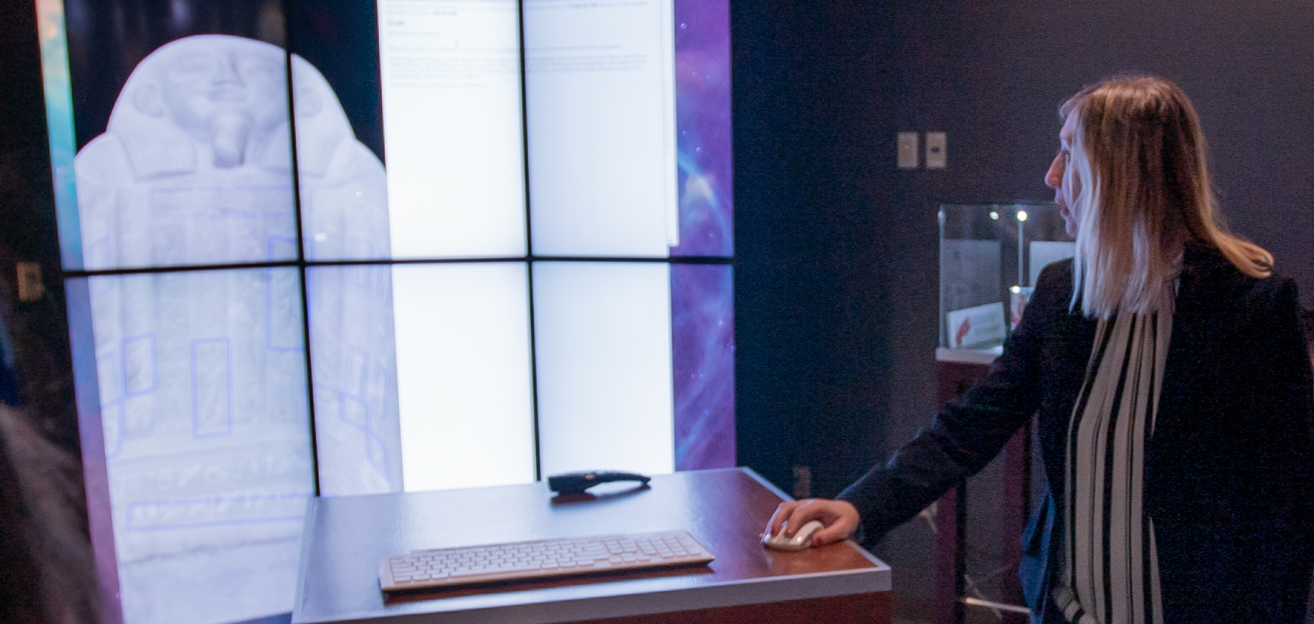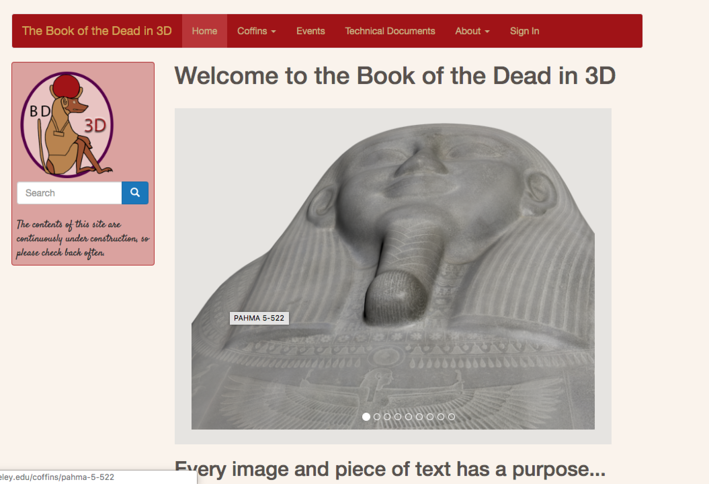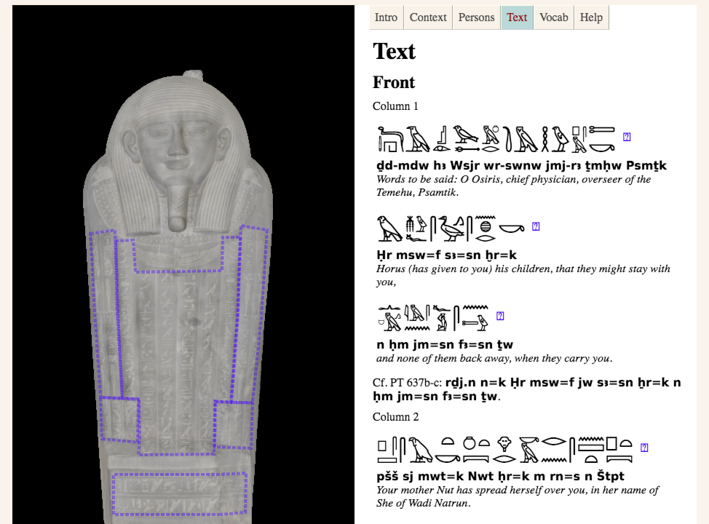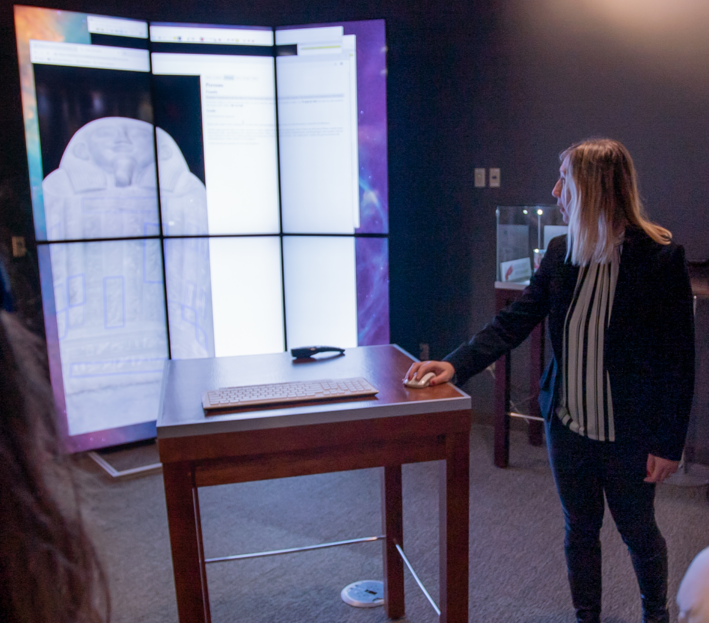From Papyrus to Coffins in 3D

Rita Lucarelli recaps an incredible year as a 2018 BCNM Faculty Seed Grant recipient.
Thanks to the seed grant of the BCNM, during the AY 2018/19 I could continue the work on my project “The Book of the Dead in 3D”, which has been active since 2015. The so-called ancient Egyptian “Book of the Dead” is the modern Western name given to a corpus of ancient Egyptian incantations and magical images that were believed to protect the dead during the imagined journey in the Other World and while encountering deities and demons populating those mysterious regions. The Book of the Dead was so popular that its compositions have been copied on a series of objects (from papyri to mummy bandages, coffins and tomb walls) for a long span of time, beginning from around 1500 BCE and up until the first centuries of our era in the Greco-Roman period of the ancient Egyptian history.
The papyri of the Book of the Dead have been much studied already, since they contain the most complete and readable text versions of the spells; however, by focusing only on the two-dimensional scrolls, egyptologists have been ignoring the modalities of textual distribution on larger three-dimensional media such as coffins. The “Book of the Dead in 3D” aims instead to investigate how the spells are copied on the coffin surface and in relation to the object’s composite architecture (lid vs bottom, exterior vs interior.) By primarily using the technique of photogrammetry, we have built twelve models of coffins, all unpublished yet and most of which are kept at the Phoebe A. Hearst Museum of Anthropology at UC Berkeley. Nine of them are already available online and downloadable in pdf from the website of the project: http://3dcoffins.berkeley.edu/ (fig. 1).

The annotated 3D model of the sarcophagus of Psamtek (PAHMA 5-522)
This website, which have been consistently developed, updated and enlarged thanks to the project research assistant Kea Johnston, which has been hired through the BCNM seed grant, is meant as a preliminary digital platform for an in-depth study of the materiality of the Book of the Dead texts and images through the 3D visualizations of inscribed, anthropoid coffins produced in the First Millennium BCE, when magical texts and iconography were particularly en vogue on mortuary objects in Egypt. In order to allow the scholarly community to fully experience the 3D models as new media of the Book of the Dead, a large amount of work has been invested on the transcription, transliteration and translation of the hieroglyphic text, which are available through annotations to the models (see fig. 2).

Other metadata, such as the iconographic description and analysis, the coffin typology, origin and the whereabouts of the coffins’ owner, are being embedded in the annotations as well, in order to contextualize each coffin and its 3D model and to recreate the magical experience of death as salvation and new beginning, which is the basis of the ancient Egyptian funerary religion. The user of the 3D model can therefore step beyond the representation of the physical image and thus explore a different and more full conception of “visualization” in terms of immersion and data expansion of the spatio-temporal experience.
The newest and exciting stage of the project, which has also started thanks to the BCNM support through the seed grant, has been to further develop the new media of the Book of the Dead, namely the 3D coffin models, in order to use them for the VR 3D display system “Cavekiosks” that have been installed in various locations at UC Berkeley (Hearst Museum, CITRIS and Banatao Institute) as well as in other UC campuses (fig. 3).

In a world where 3D techniques, augmented and virtual reality are being increasingly changing our approach to antiquities and world heritage, I am hoping, with project, to open new perspectives for the study of the ancient Egyptian magic, religion and funerary beliefs, by developing a more direct and quickly sharable experience for scholars, students and any interested users, when looking for information on the ancient Egyptian sources and their media. By creating a 3D database of coffins, the new media of the Book of the Dead can be also as teaching tool for university courses as well as educational tools in museums.
